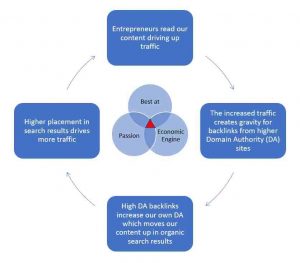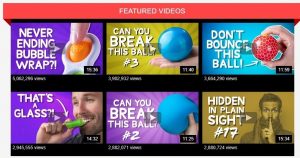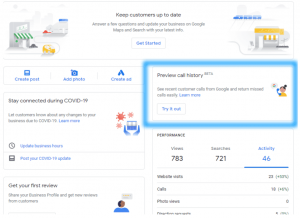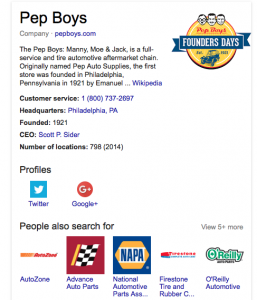We have run over 150+ unique search engine optimization campaigns here at Visiture. We have a lot of experience under our belts and we’ve heard of almost every tip and trick in the book. But in addition to all of the good advice, the amount of bad advice that we’ve heard is astonishing. You never know what will be suggested to you, but these 10 items are by far the worst SEO ideas/myths I have heard.
- More short form content is better
This is easily the biggest myth out there about SEO. In defense, this used to be true back in 2006-2011 when Google did favor a lot of long-tailed keyword phrases. If you wrote an article on “How to Market a Divorce Law Firm,” you had a good chance to rank for “how to market a divorce law firm.” Then Rank Brain came along and changed the game. Since then, Google has really been favoring more popular articles for long-tailed keyword phrases. In 2016 having as much content as possible is not the answer. Instead, you need high-quality content. In 99% of cases, focusing on quality is much better than focusing on quantity. Searchmetrics came out with a study that showed on average, the web pages in the top 1-5 on Google generally had at least 1,200 words. If you are not producing 1,200+ word blogs, that are in-depth and information, then you are not doing your SEO work justice.
On the flip side, users are not known to have the most patience in the world, and creating content just for the sake of length can be detrimental as well. When developing your content, ask yourself, “is this the juicy content that the users want to read, or is this just a bunch of fluff we are putting in there to make it longer?”
- No follow other categories in navigation map
Having a good siloed site structure is very important. One philosophy is to “nofollow” all of the links on your navigation bar minus the category/subcategories that the user is currently on. In short, let’s say that you have 5 main categories and 10 subcategories for each of the main categories, if the user is currently on one of the subcategories, the other 4 main categories will have no follow tags on them and their respective subcategories. We tried this twice before and other times it actually negatively impacted the site compared to helping it. Therefore, we are going to recommend that you don’t do it!
- Put 100+ characters alt text in images
Someone once said, the more keywords you have, the better it is for image searchers. However, this cannot be farther from the truth. Google puts more weight on keywords on the left-hand side the most. For images, you want short alt tags, otherwise, the keywords will be diluted down. Alt tags are great for helping your images rank in Google images, but having long alt tags just for the sake of ‘ranking for more’ will not help, and more than likely, you will find this a large waste of time.
- No follow all external links
Google does not want you to horde all of the link authority. You want to make sure that your posts are unbiased and give other websites credit as well. It is fine to no follow links in author bios and commercial sites where there could be a monetary beneficial gain, but if you link to a good piece of content, make sure at least half of your external links are not ‘nofollow.’
- Dynamically create meta information
Having unique meta titles and descriptions is extremely important for SEO. Of course, if you have 50,000 producing, then having unique metal information might not be feasible. But if you have the resources available, then you definitely want to make unique meta titles and descriptions of the utmost important. As an agency, we have proven data showing that creating unique meta titles and descriptions helps in Google search and outperforms dynamically created content 100% of the time.
- Backlinks are dead
Whoever tells you that backlinks are dead is completely mistaken. Backlinks are nowhere near dead – even Google had said that they are one of the top three criteria that they look for! While having directory links, forum links, or blog comment links are dead, that does not mean backlinks are dead. Having good, unique, and high-quality content links with good social shares, backlinks, and user generated content are the best links that you can obtain and provides tons of value.

Source SERoundtable.com.
- Google loves big box retailers for SEO
Google loves giving users the absolute best information that they have quickly. However, Google does not favor big box retailers! In fact, it prefers niche websites. Having a niche website is easier than ever before in Google’s eyes, and it is much easier to compete against the big box retailers. See the screenshot below for “American Flags.” Notice only small niche companies rank for it over the big retailers (Target, Walmart, Amazon, etc.).

- SEO is too hard for startups
SEO is not too difficult for startups. That’s just not true. Most of the time, startups find SEO to be difficult because of the expectations that they have. We go into more in depth here however, you need to realize that it is not impossible. With the right expectations and the right niche, you can go from zero to hero in no time. Can you compete right out of the box for keywords like “wedding invitations” or “Men’s cologne?” No, but you can achieve niche phrases quickly and get an ROI.
- All high DA links are the same
Again, this myth couldn’t be further from the truth. All high DA websites, like Forbes, BusinessInsider, Techcrunch and more, are not the same. In fact, they are very different. They have a unique market and different audiences. They are also different in a way, because they are a good fit for some websites, and not so much for others. Depending on your niche, you want to try to get links from websites that are similar to you. If you are a finance related site, then you want to get a link from a website that focuses on finance, like the Financial Times, rather than a general website like Forbes.
- Creating Feeder/Private Blog Network Sites
Private Blog Networks are not dead, but they are on their death bed as we speak. At this point, the majority of PBNs (Private Blog Networks) are literally blogs that users interact with, compared to feeder websites that only pass link juice. These sites work for now, but if you are using them, you are sacrificing future gains for short term results. In our expert opinion – don’t use them.
Conclusion
These are just some of the many SEO myths and bad ideas that I’ve been hearing. Don’t get sucked into believing them – they aren’t going to help you at all. If you want something that will help you, check out our SEO guide for 35 pages of data backed SEO tips and practices.
Digital & Social Articles on Business 2 Community(31)








